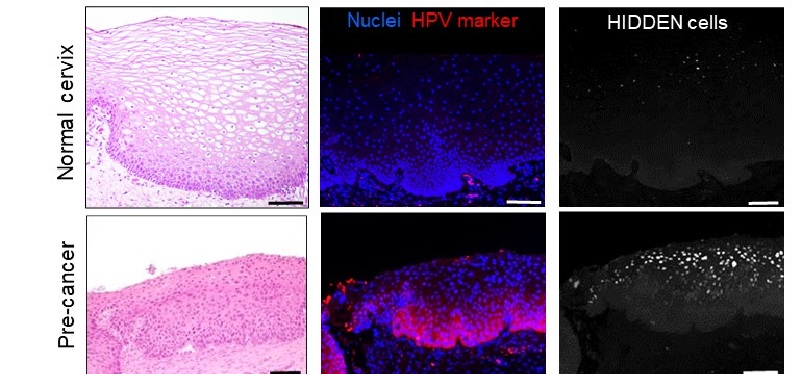A type of HPV has been found to cause skin cancer, according to a new report – NBC News

Report on a Novel Pathogenesis of Skin Cancer and its Implications for Sustainable Development Goals
1.0 Introduction: Advancing Global Health Targets
A recent case report from the National Institutes of Health (NIH), published in the New England Journal of Medicine, has identified a new direct cause of skin cancer. This discovery represents a significant step forward in medical science, directly contributing to the ambitions of Sustainable Development Goal 3 (SDG 3): Good Health and Well-being. By deepening the understanding of non-communicable diseases like cancer, this research supports Target 3.4, which aims to reduce premature mortality from such diseases, and Target 3.b, which calls for supporting research and development of medicines and vaccines.
2.0 Summary of Key Findings
The research centers on a specific strain of human papillomavirus (HPV), which was found to be the direct carcinogenic driver in an immunocompromised patient. This finding challenges previous assumptions about the virus’s role in skin cancer development.
- Causative Agent: A type of virus known as beta HPV, commonly found on the skin of approximately 90% of the population, was identified as the direct cause of cutaneous squamous cell carcinoma in the patient.
- Mechanism of Action: In the context of a weakened immune system, the beta HPV integrated its DNA into the host’s skin cells, causing them to become cancerous. This behavior is typically associated with alpha HPV strains that cause cervical and other cancers.
- Patient Profile: The discovery was made in a 34-year-old woman with a genetic condition that compromised her T-cell immune response. She developed 43 instances of cutaneous squamous cell carcinoma.
- Successful Intervention: Conventional treatments were unsuccessful. A stem cell transplant, which provided the patient with a new, functional immune system, successfully eradicated the cancer, with no recurrence three years post-transplant.
3.0 Implications for Sustainable Development Goals
The findings have profound implications for several SDGs, particularly those concerning health, equity, and global partnerships.
3.1 Contribution to SDG 3: Good Health and Well-being
This research directly supports the global effort to ensure healthy lives and promote well-being for all ages.
- Enhanced Disease Understanding: The report clarifies the complex interplay between viruses, the immune system, and cancer, providing a new model for how non-communicable diseases can develop. This knowledge is foundational for creating more effective public health strategies.
- Improved Prevention and Treatment: While UV protection remains the primary preventative measure for the general population, this finding underscores the need for targeted surveillance of high-risk groups. The successful stem cell transplant opens avenues for novel therapeutic strategies for virally-driven cancers.
- Informing Vaccine Research: The current Gardasil vaccine targets alpha HPV strains. This report highlights the need for further research (Target 3.b) to determine if existing vaccines offer cross-protection against beta HPV or if new vaccines are required to protect vulnerable populations.
3.2 Addressing SDG 10: Reduced Inequalities
The case study emphasizes the need to reduce health inequalities by focusing on the specific needs of vulnerable populations.
- Focus on Vulnerable Groups: Immunocompromised individuals are up to 100 times more likely to develop squamous cell carcinoma. This research highlights their specific vulnerability and the necessity of tailored healthcare protocols to ensure they are not left behind.
- Equity in Access to Treatment: The successful but highly advanced stem cell transplant treatment raises important questions about equitable access. Achieving SDG 10 requires ensuring that such life-saving innovations become accessible to all who need them, regardless of their socioeconomic or geographical situation.
3.3 Fostering SDG 17: Partnerships for the Goals
The dissemination of this research exemplifies the power of global collaboration. The work conducted by a national public health institution (NIH) and shared with the global scientific community through a peer-reviewed journal demonstrates the partnerships essential for tackling global health challenges and achieving the SDGs.
4.0 Conclusion
The identification of beta HPV as a direct cause of skin cancer in immunocompromised individuals is a critical scientific advancement. Beyond its immediate clinical relevance, this discovery reinforces the principles of the Sustainable Development Goals. It advances our progress toward SDG 3 by improving the understanding and potential treatment of a non-communicable disease. Furthermore, it calls for a renewed focus on SDG 10 by highlighting the urgent need for equitable healthcare for vulnerable populations and showcases the collaborative spirit of SDG 17, which is essential for translating scientific discovery into global public good.
Which SDGs are addressed or connected to the issues highlighted in the article?
- SDG 3: Good Health and Well-being: The article’s core focus is on a new medical discovery related to skin cancer, its causes, and potential treatments, which directly aligns with ensuring healthy lives and promoting well-being.
- SDG 9: Industry, Innovation, and Infrastructure: The article highlights a significant scientific breakthrough resulting from research at a major institution (National Institutes of Health), which relates to fostering innovation and enhancing scientific research.
What specific targets under those SDGs can be identified based on the article’s content?
SDG 3: Good Health and Well-being
- Target 3.4: By 2030, reduce by one-third premature mortality from non-communicable diseases through prevention and treatment and promote mental health and well-being.
- Explanation: The article directly addresses this target by discussing skin cancer, a non-communicable disease. The discovery of a new cause (beta HPV) and the successful treatment of a patient through a stem cell transplant contribute to the understanding and treatment of this disease. The mention that “immunocompromised people should be monitored more closely” and the advice to use sunscreen for prevention also align with this target.
- Target 3.b: Support the research and development of vaccines and medicines for the communicable and non-communicable diseases… provide access to affordable essential medicines and vaccines…
- Explanation: The article discusses the human papillomavirus (HPV) and the existing Gardasil vaccine, which protects against cancer-causing alpha HPV strains. The new findings about beta HPV suggest a need for further research, as stated by Dr. Oro: “This suggests that this other side of the family might also be important.” This points directly to the need for continued research and development of vaccines and treatments for HPV-related cancers.
SDG 9: Industry, Innovation, and Infrastructure
- Target 9.5: Enhance scientific research, upgrade the technological capabilities of industrial sectors in all countries… including… encouraging innovation and substantially increasing the number of research and development workers…
- Explanation: The entire article is a report on a new scientific discovery made by “Doctors at the National Institutes of Health” and published in the “New England Journal of Medicine.” This represents the output of enhanced scientific research and innovation within the medical field, directly contributing to the global knowledge base on cancer.
Are there any indicators mentioned or implied in the article that can be used to measure progress towards the identified targets?
Indicators for Target 3.4 (Reduce mortality from NCDs)
- Incidence of specific cancers: The article identifies “cutaneous squamous cell carcinoma” as the “second-most common type of skin cancer.” Tracking the incidence of this cancer is a direct measure of the disease burden.
- Risk factors for vulnerable populations: The article states that “People with weakened immune systems are as much as 100 times more likely to develop squamous cell carcinoma.” This statistic is an indicator of the disproportionate risk faced by specific health groups.
- Treatment success rates: The case report’s outcome, where “Three years post-transplant, the woman’s skin cancer has not returned,” serves as a qualitative indicator of successful treatment development and application.
Indicators for Target 3.b (R&D for vaccines and medicines)
- Number of identified viral strains: The article mentions that “Scientists have so far identified about 200 unique strains of the virus [HPV].” This number indicates the progress of scientific research in understanding the virus, which is foundational for developing comprehensive vaccines.
- Vaccine coverage and effectiveness: The mention that the “Gardasil HPV vaccine protects against nine strains of alpha HPV and has been shown to lower rates of cervical and head and neck cancers” implies that vaccine effectiveness rates are a key indicator of progress.
Indicators for Target 9.5 (Enhance scientific research)
- Scientific and technical publications: The discovery was published in the “New England Journal of Medicine,” a high-impact scientific journal. The number and quality of such publications are a standard indicator of research output.
- Research activity in health institutions: The work was conducted by the “National Institute of Allergy and Infectious Diseases, part of the NIH.” The activities and findings of such research bodies are a direct measure of investment and progress in scientific research.
Table of SDGs, Targets, and Indicators
| SDGs | Targets | Indicators |
|---|---|---|
| SDG 3: Good Health and Well-being | 3.4: Reduce premature mortality from non-communicable diseases (NCDs) through prevention and treatment. |
|
| SDG 3: Good Health and Well-being | 3.b: Support the research and development of vaccines and medicines for communicable and non-communicable diseases. |
|
| SDG 9: Industry, Innovation, and Infrastructure | 9.5: Enhance scientific research and encourage innovation. |
|
Source: nbcnews.com

What is Your Reaction?
 Like
0
Like
0
 Dislike
0
Dislike
0
 Love
0
Love
0
 Funny
0
Funny
0
 Angry
0
Angry
0
 Sad
0
Sad
0
 Wow
0
Wow
0












































































